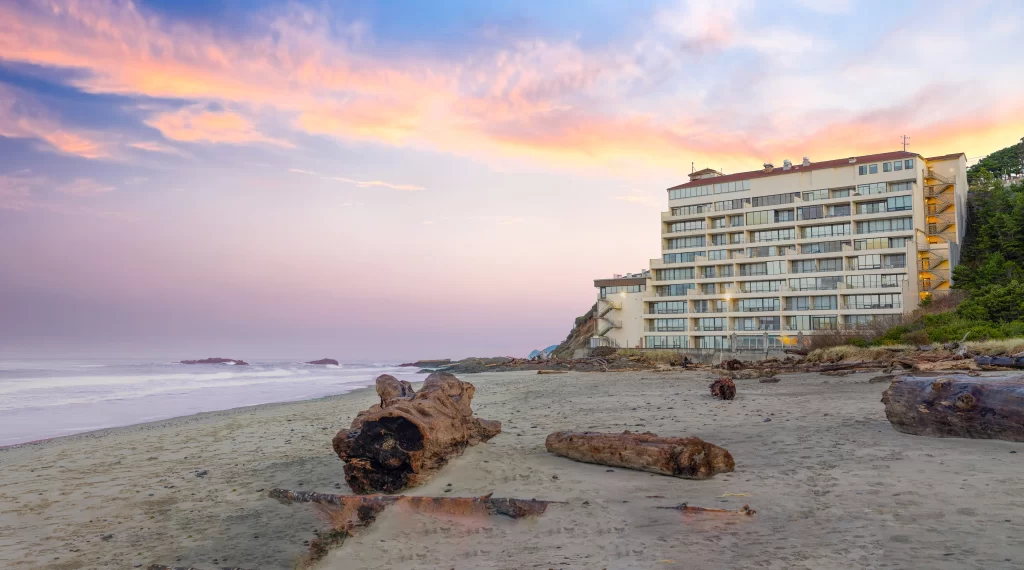
Tides, Rods, and Reels: Fishing Adventures on the Oregon Coast
The horizon is a shifting palette of gray and gold as gulls wheel overhead, their cries mixing with the crash of surf. A sea lion barks from the jetty while a charter boat rumbles out of Depoe Bay, its deck stacked with rods, reels, and hopeful anglers. Out beyond the bar, salmon move in schools, silver flashes in the green Pacific swells. Onshore, the tide recedes to reveal Siletz Bay’s sandy flats, where clammers stoop to dig, their buckets filling with promise.
Fishing on the Oregon Coast isn’t just recreation: it’s a sensory immersion. The salt air lingers on your lips, the waves rock beneath your feet, and every tug on the line delivers a thrill that echoes through generations of coastal families.
“Ever since I was a little kid, I was fascinated with what was swimming around in the water. I remember fishing sunfish and bream out of my grandmother’s pond in Florida,” said Michael Schneider, General Manager of the Inn at Spanish Head. “Out here on the Oregon Coast, you’ve got everything: ocean fishing, river fishing, clamming, and crabbing.”
“People don’t just come here to catch fish. They come to experience the ocean, the rhythm of the tides, the wildlife, and the pure adventure of being out on the water.”
Michael’s connection to fishing hasn’t faded. “I go salmon fishing most mornings. There’s no better way to start the day than being out on the water.”
A Year-Round Fishery
The beauty of Oregon’s Central Coast is its variety.
The Central Oregon Coast is blessed with variety:
-
Rockfish, lingcod, and black cod are caught year-round.
-
Salmon runs peak in summer, with Chinook and coho offshore.
-
Pacific Halibut season opens in carefully managed seasons that begin in late spring.
-
Albacore tuna arrive midsummer, can sometimes be pursued offshore from June through October.
-
Dungeness crab pots bob from December through August, and is one of the coast’s signature delicacies. Newport is the Dungeness Crab Capital of the World.
“It’s about seven minutes away, the Siletz River, one of the more popular salmon runs,” Michael said. “Chinook salmon season starts in July and goes into late October or early November, and steelhead is very popular during the winter months. The ocean never gives you the same day twice.”
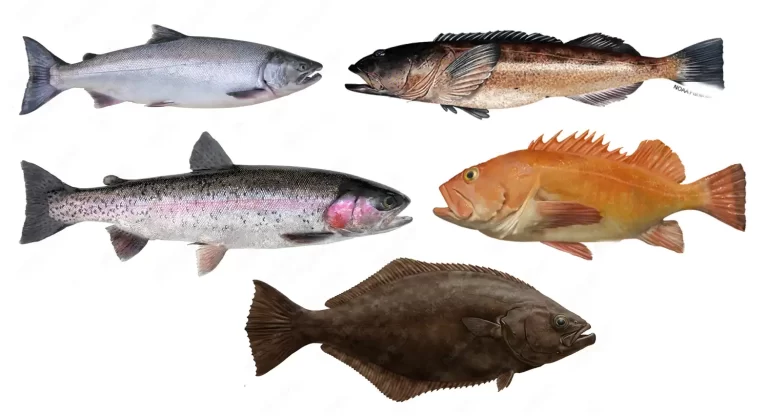
Siletz Bay: Clamming and Crabbing
For those who prefer to keep their feet closer to shore, Siletz Bay offers a calmer rhythm. At low tide, the bay reveals its hidden world: broad mud and sand flats alive with movement. Rivulets carve through the sediment, gulls circle overhead, and herons stalk the shallows. For diggers, the “shows” (small holes in the mud) mark where clams are buried, and families arrive with rakes, buckets, and PVC pipes to pull varnish clams, or even geoducks from the flats.
“Siletz Bay is a great resource. You’ve got Gapers, Purple Varnish clams and Geoduck clams, and sand shrimp you can dig for bait. Razor Clams can be found in Seaside and Cannon Beach. If you head further south to Yaquina Bay, you’ll find Cockle Beds, and Geoducks. There’s really an incredible variety of shellfish up and down this coast, and Siletz Bay is right here in our backyard,” Michael explained.
These mudflats are more than a harvest ground: they are part of a living estuary where migrating shorebirds feed, juvenile fish shelter, and salt marshes connect to the sea. In the quiet of low tide, with the bay stretched wide and glinting, it feels like walking across the bed of the ocean itself.
And if you’d rather let someone else do the digging, Fathoms Restaurant & Bar serves up the same bounty with coastal flair. Locally sourced oysters, clam chowder is a house favorite and, in season, fresh Dungeness crab is always a highlight.
“We have some of the best clam chowder on the coast, and the oysters are locally sourced from nearby farms,” Michael said. “You can get them fried or sautéed. The bounty of the ocean is what we want to showcase upstairs.”

Tidepools: A Hidden World at Low Tide
When the tide recedes, another treasure of the Oregon Coast emerges. Along the rocky outcrops near Lincoln City, tidepools form like miniature aquariums, teeming with life that is normally hidden beneath the waves.
One of the most remarkable tidepooling spots is directly in front of the Inn at Spanish Head. At a negative tide, the rocks below the hotel revealed pools filled with starfish, anemones, and mussels, and more than 50 visitors were seen exploring the stretch of beach. Unlike most resorts, the Inn is built directly on the sand, which means tidepools are literally right outside the beach level floor of the hotel.
“Most of the time the tidepools are covered by the ocean, but during low tides, especially the king tides, whole areas open up,” Michael said. “You’ll see sea anemones, starfish, sea cucumbers, it’s really a wild environment and ecosystem to explore.”
Kids are especially captivated, crouching at the edge of shallow pools to spot creatures clinging to rocks or waving gently in the water. “The kids love it, and you even have the chance to interact with some of these creatures if you’re careful enough,” Michael added.
Mussels also carpet the rocks, waiting for waves to return. According to Explore Lincoln City, the best tidepooling spots nearby include Roads End, NW 15th Street, and the Inn at Spanish Head. Mussels can legally be harvested here, but you’ll need a valid shellfish license from ODFW, and you should always check the Shellfish Safety Hotline for closures before collecting.
Whether you’re a naturalist, a forager, or simply curious, tidepooling is a reminder that the shoreline itself is alive with mystery.
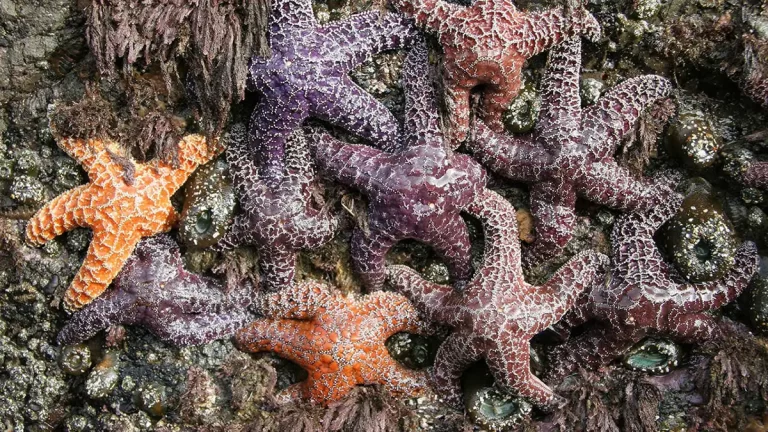
Offshore Adventures
A short drive south from Lincoln City to Depoe Bay, or a little farther to Newport, opens the door to deep-sea adventure. Charter captains with decades of experience lead trips into waters teeming with salmon, halibut, lingcod, rockfish, and tuna when in season. Crossing the bar is its own rite of passage, the churn of whitewater at the harbor mouth giving way to the rolling expanse of the Pacific.
“For someone just starting out, I always recommend a short trip to the rock formations close to shore. You don’t have to go far, maybe half a mile, and there’s a wide variety of fish waiting. Rockfish are everywhere, and depending on the season, you might bring in salmon, halibut, or even tuna. It’s a great way to get hooked on the sport,” Michael said.
Another advantage of booking a local charter is convenience. It’s adventure made easy and unforgettable. “The deep-sea boats out of Depoe Bay include a one-day license with your pass. I believe it’s the same with the river guides,” he noted.

When the Fish Don’t Bite
Of course, every angler knows there are days when the fish don’t cooperate. But at the Inn at Spanish Head, the reward is never far away. Fathoms Restaurant & Bar, perched high on the 10th floor, brings the sea straight to your table.
Step inside after a day on the water and you’re greeted with sweeping, floor-to-ceiling views of the Pacific. The scent of buttery crab cakes and pan-seared salmon fills the air. A glass of Oregon pinot pairs with fresh halibut, Dungeness crab, razor clams, or oysters, all sourced from the same waters you’ve just been fishing.
“If you didn’t get anything, just come to the restaurant, we’re happy to cook something up,” Michael said with a grin. “We always run salmon, and during halibut season in May and June, we get fresh halibut, sometimes right off a Newport boat. The chowder’s great, the sautéed shrimp is always popular, and the oysters are locally sourced.”

It’s not just about the food. From Fathoms Restaurant & Bar, guests often spot whales spouting offshore. In winter (December–January), the southbound gray whale migration passes by in spectacular numbers. In spring (March–April), the northbound migration brings mothers and calves hugging the coastline. From June through mid-November, resident gray whales linger and feed along the central coast, surfacing close enough to spot from your dining table. On rare summer days, lucky watchers may even glimpse humpbacks or orcas offshore.
“Down in Depoe Bay, which is the whale-watching capital of Oregon, they have trips that go out quite often,” Michael added.
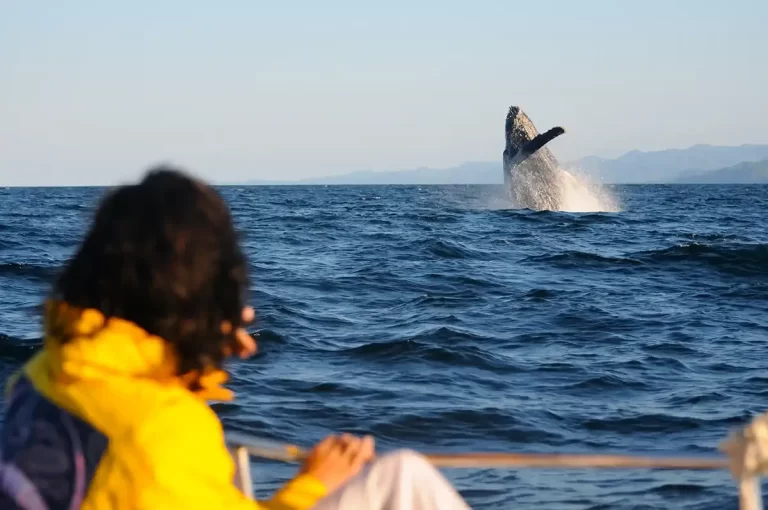
The Stories Beneath the Waves
Fishing here isn’t just about what you bring home. It is also about the stories embedded in the landscape. Depoe Bay bills itself as the “Whale Watching Capital of Oregon,” where resident gray whales feed nearly year-round. Siletz Bay once housed sawmills and canneries, but they have now been replaced by estuary restoration efforts that bring salmon back to their ancestral runs. Even the Inn at Spanish Head sits perched above tide lines where coastal history has unfolded for centuries.
“Whether you’re going out deep-sea or just the little shoreline here, it’s an experience a lot of people enjoy, especially with kids,” Michael said. “There’s really something to do out here any time of year.”
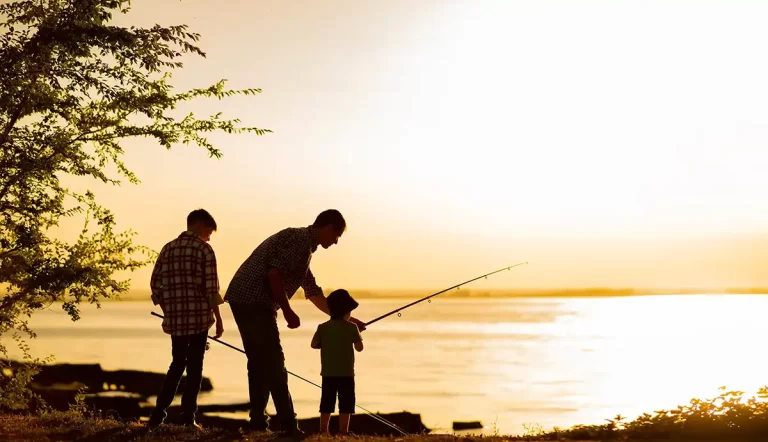
Fishing as Transformation
What begins as a pastime often ends as something more profound. On a boat, the modern world fades into the horizon. On the bay, time is measured not by clocks but by tides. Even kids who’ve never fished before feel the spark: the moment a crab pot surfaces heavy with life, or when a salmon bends their rod toward the sea.
“It’s very humbling fishing, especially on the river. You can go days without a bite, seals can steal your fish, and when you finally land one, it’s a very rewarding experience,” Michael said. “Play the odds, know what you want to target, and pick a trip you’re comfortable with.”
For Michael, that feeling never gets old. “I go every morning, for the most part. If I get something on the boat and then find some chanterelles in the woods after, that’s a good day.”
Planning Your Oregon Coast Fishing Trip
- Charter boats depart daily from Depoe Bay and Newport (10–20 minutes from the Inn).
- Siletz Bay offers clamming and crabbing, with tide charts available for planning.
- Oregon fishing regulations help maintain healthy runs: always check the latest rules for open seasons and limits.
- Charter boats typically include a one-day angling license; many river guides handle licensing, too.
- The Inn at Spanish Head provides the perfect oceanfront base, with Fathoms Restaurant & Bar, if you’d rather savor the catch without the work.
Fishing here isn’t just a trip: it’s a memory waiting to be made.

Frequently Asked Questions about Fishing in Lincoln City
Q: What fish can you catch in Lincoln City?
Depending on the season, you may find surf perch from the beach, Chinook and coho salmon offshore, Pacific halibut during open seasons, lingcod and rockfish year-round, and even albacore tuna in summer. Dungeness crab is in season December–August, and clamming opportunities abound in Siletz Bay.
Q: Where can I go clamming and crabbing in Lincoln City?
Siletz Bay is the go-to spot for both clamming and crabbing. Families often dig for gapers, and purple varnish during low tide, while crab rings and pots are dropped from the docks. Always check for shellfish safety closures before harvesting.
Q: Where are the best Oregon Coast fishing charters?
Depoe Bay and Newport are the closest harbors for deep-sea charters, offering trips that include salmon, halibut, lingcod, tuna, and rockfish. Both are within 20 minutes of the Inn at Spanish Head.
Q: Do I need a fishing license in Oregon?
Yes. A valid Oregon angling license is required for fishing and shellfishing. When you book with a local charter, they typically include a one-day license with your trip; many river guides handle licensing as well.
Q: What if I don’t catch anything fishing in Lincoln City?
You can still enjoy fresh coastal seafood at Fathoms Restaurant & Bar on the 10th floor of the Inn at Spanish Head. The menu features salmon, halibut (in season), crab, clams, and oysters, and the panoramic ocean views make it one of the best spots for whale-watching on the coast.
Q: When is the best time to see whales on the Oregon Coast?
- Winter (Dec–Jan): Southbound gray whale migration.
- Spring (Mar–Apr): Northbound gray whale migration, with mothers and calves close to shore.
- Summer–Fall (Jun–Nov): Resident gray whales feeding nearshore, with occasional sightings of humpbacks or orcas.
Q: I’m new to fishing. What’s a good first trip?
“Jump on a boat and fish the rock formations close to shore, maybe half a mile out. There are a lot of fish down there, so you’re going to catch something for the most part,” Michael said. “On the river, your best bet is to contact a guide. They’ll set you on the right path. You watch them, then get your own boat.”
Sidebar: Tidepooling Tips for Visitors
Exploring tidepools is one of the most magical experiences on the Oregon Coast, but it’s essential to do it safely and responsibly.
When to Go:
- Visit at low tide or during especially low king tides.
- Check local tide charts before heading out.
What to Bring:
- Wear sturdy shoes with good grip (rocks can be sharp and slippery).
- Bring a bucket or small container for observation (but return creatures to the same spot).
- Carry a camera, tidepools are full of color and detail.
What to Do (and Not Do):
- Look, don’t pry. Never pull creatures off rocks; many cling tightly for survival.
- Handle gently, if at all. Wet your hands before touching, and always return animals carefully.
Stay aware of the ocean. Sneaker waves can surge quickly; never turn your back to the sea.
Best Finds in Lincoln City:
- Sea anemones
- Starfish (sea stars)
Mussels - Sea cucumbers
Crabs (often small ones scuttling in the rocks)
Insider tip from Michael: “During low tides, especially king tides, whole areas open up and you’ll see anemones, starfish, sea cucumbers, it’s really a wild ecosystem to explore. Kids love it.”
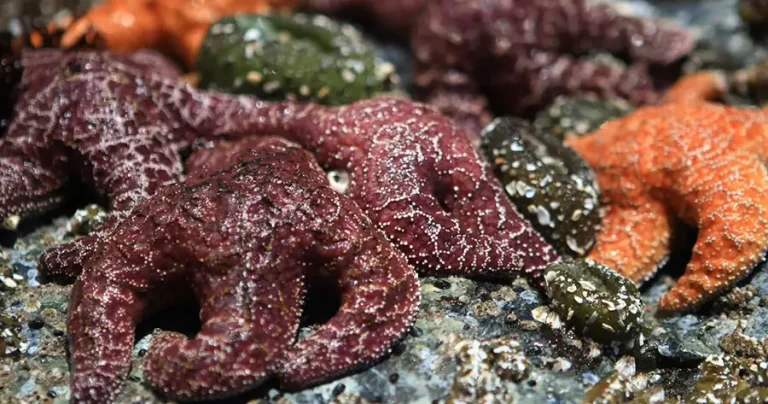
Ready for your own coastal adventure?
Book your stay at the Inn at Spanish Head, Lincoln City’s only oceanfront resort, and explore Oregon’s wildest fishing, crabbing, and tidepooling experiences just steps from your room.
